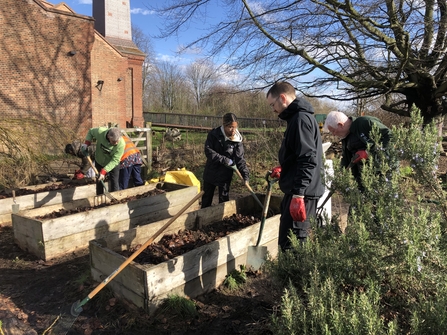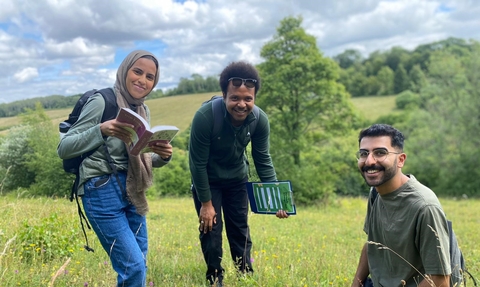
Our research into London's rich and varied wildlife
Many research projects are undertaken by London Wildlife Trust, often in collaboration with other organisations.
Read on to find out about our ongoing research, and reports we have published.
Want to keep up-to-date with the latest news from London Wildlife Trust?
Research and reports
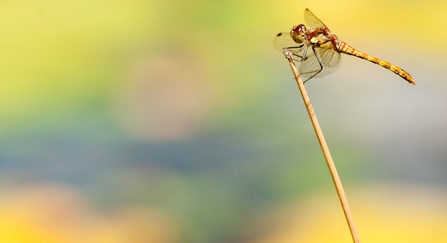
Common darter dragonfly credit Ross Hoddinott/2020VISION
Dragonfly Detectives - 2020
Between May and September London’s streams, rivers and ponds light up with the dazzling, darting flight of dragonflies and damselflies.
These attractive and fascinating insects, collectively known as odonata, thrive where the water is clean and are a great indicator species of healthy ecosystems. However, little is known about their distribution across London.
As part of our Water for Wildlife project we published Today I saw a demoiselle; Dragonflies and damselflies of London, a guide ntroducing these magnificent insects and highlighting some of the best sites in London to spot them.
Burgess Park credit London Wildlife Trust
Spaces Wild - 2015
This report by London Wildlife Trust highlighted the importance of protecting wild spaces as a critical component of London’s green infrastructure. Across the capital more than 1,500 wildlife sites are recognised as Sites of Importance for Nature Conservation (SINCs), comprising almost one fifth of the city. The sites provide a vital home to many of the 13,000 species recorded within Greater London over the last 50 years.
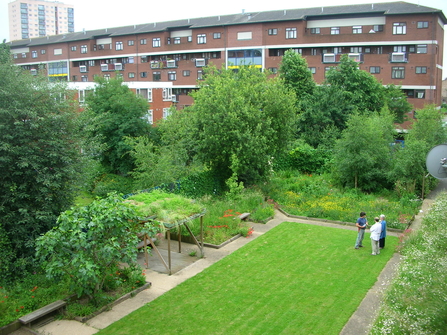
A Cool Place to Live - 2015
The landscapes of most of London’s housing estates are poor for nature and also vulnerable to the impacts of climate change. This report highlights the matters of concern and sets out the steps that can be taken to improve them for residents’ well-being. It was produced for the Neighbourhoods Green initiative, advocating for the better inclusive and sustainable design, use and management of social housing landscapes.
Please note this initiative has since closed.
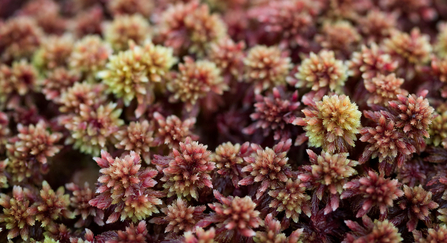
WildNet - Chris Lawrence
Peaty Finders - 2015
This report from London Wildlife Trust highlighted the rare but important bogs of London. Once common across large areas of England, such bogs are becoming increasingly scarce.
However, the Trust's bog-standard research found that the rare marsh violet can still be found in Shirley near Croydon; the beautiful, star-like flowers of bog asphodel still bloom in Bromley; and the lesser skullcap, pollinated by the long-tongued bee, can still be spotted in Wimbledon Common.
Discover more of our research and reports
Living with Rainwater - 2014
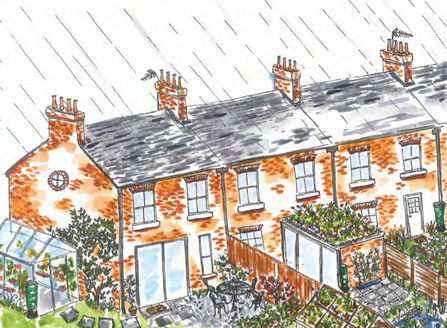
Living with Rainwater is a community guide to creating urban greenspaces for environmental resilience.
The Lost Effra Project empowered communities to create green landscape features to increase local climate resilience and improve neighbourhoods for people and wildlife. This is the project's introductory guide to creating household scale rain gardens, building green roofs, depaving and fitting rainwater harvesting.
An alternative version of the report with a focus on social housing is also available.
London's Living Landscape - 2014
Heather Wimbledon Common credit Mathew Frith
A call to restore the UK's battered ecosystems, for wildlife and people.
To adapt to climate change, the UK’s wildlife will need to move along ‘climate corridors’ up and down the country, or to shadier slopes or cooler valleys. Wildlife has done it all before, after the last ice age, but this time the change is faster and there are unexpected obstacles: cities, motorways and expanses of hostile countryside.
All Change? - 2013
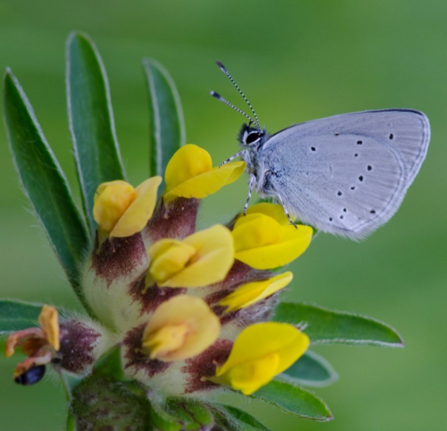
small blue on kidney vetch by Tim Melling
The status of biodiversity conservation in London.
A new report published by London Wildlife Trust and Greenspace Information for Greater London, suggests that the conservation of nature and wildlife in London remains under threat.
The report is a summary of an audit undertaken during 2013 which looked at the status of nature conservation policies in local plans, the London Wildlife Site System, Biodiversity Action Plans and at a number of other issues affecting the conservation of the capital’s nature.
A natural legacy of the 2012 Games - 2012
London Wildlife Trust wants the Queen Elizabeth Olympic Park to be rich in wildlife and accessible to all. The Olympic Park Biodiversity Action Plan is integral for the Park to become recognised as a site of importance for nature conservation to embed a community-led conservation focus in this part of east London.
London: Garden City? - 2010
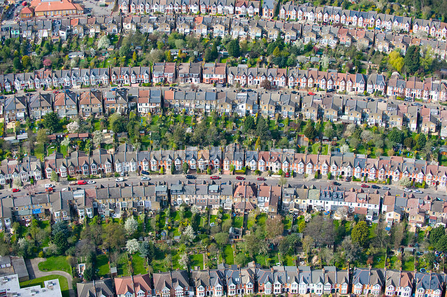
Credit Jason Hawkes
A pioneering study of London's gardens, conducted in partnership with Greenspace Information for Greater London (GiGL), revealed that London's gardens - making up nearly a quarter of the capital - are changing from green to grey at a rate of 2.5 Hyde Parks per year. Hard surfacing, such as decking and paving, increased by more than a quarter during the eight-year study period. London Wildlife Trust's report highlighted the impacts of garden design and management on wildlife as an issue that needs to be addressed.
A buzz up top- - 2006
Mining bee credit Mathew Rich
A buzz up top aims to inspire and encourage anyone involved with the creation of green roofs and living walls, to include elements and features that benefit insects and other invertebrates.
Green roofs and living walls are increasingly recognised as vital components of urban green infrastructure. They can perform essential ecosystem services to help mitigate the impacts of climate change in towns and cities, serve to provide more attractive and accessible roof surfaces, and importantly provide additional spaces to conserve biodiversity.
London's life-force - 2004
Volunteers at Welsh Harp credit Nicolo Gervasi
How to bring natural values to Community Strategies.
This publication is about quality of life. It explains how the conservation of wildlife and the natural environment is linked to those issues which are mentioned most when people consider the wellbeing of their local community and condition of their local neighbourhood. It explores why these links are important and how the connections can be strengthened. It illustrates the benefits of integrating nature with initiatives related to health, housing, community cohesion, education, economic prosperity and the environment, and demonstrates these through case studies which are all London-based.
London's natural values - 2003
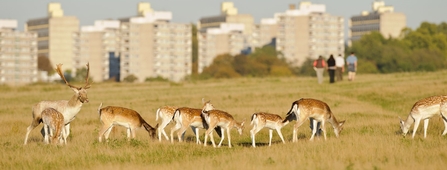
Fallow deer credit Terry Whittaker/2020VISION
An ecological approach to greenspaces.
Exploring benefits that can be gained from adopting an ecological approach to the design and management of London’s parks and greenspaces.
This would deliver sustainable solutions to challenges such as: flood management, reducing the adverse effects of microclimates, sustainable resource use, pollution control, coping with climate change and biodiversity conservation.
Case studies show how it is possible to tackle these issues in practical ways that make a real difference. The document also dovetails with emerging government policies that address sustainable communities and quality of life.
Brownfield? Greenfield? - 2002
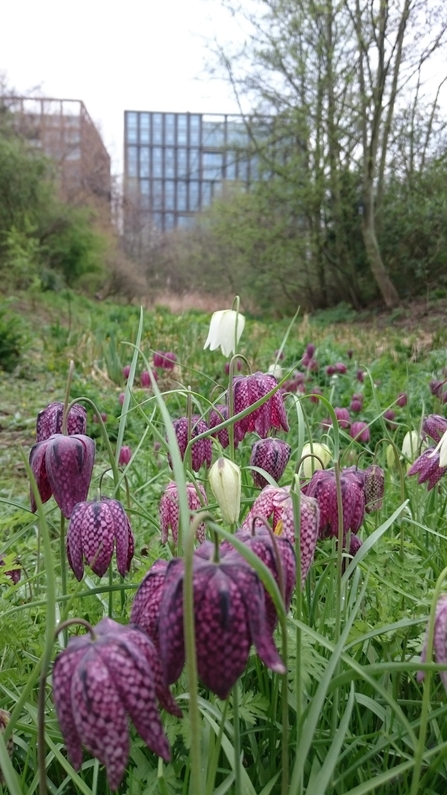
Snake's head fritillary at Camley Street credit Joe Richomme
The threat to London's unofficial countryside,
In this report, we aim to demonstrate that urban wastelands are far from being wasted assets. They often support a rich array of wildlife and provide people living and working in urban areas with the opportunity to experience nature on their doorsteps. This is particularly important where public access to other local green open spaces is very limited. Brownfield sites (the term used by developers and planners to refer to previously-developed land) are often more natural and full of wildlife than many greenfield sites.
